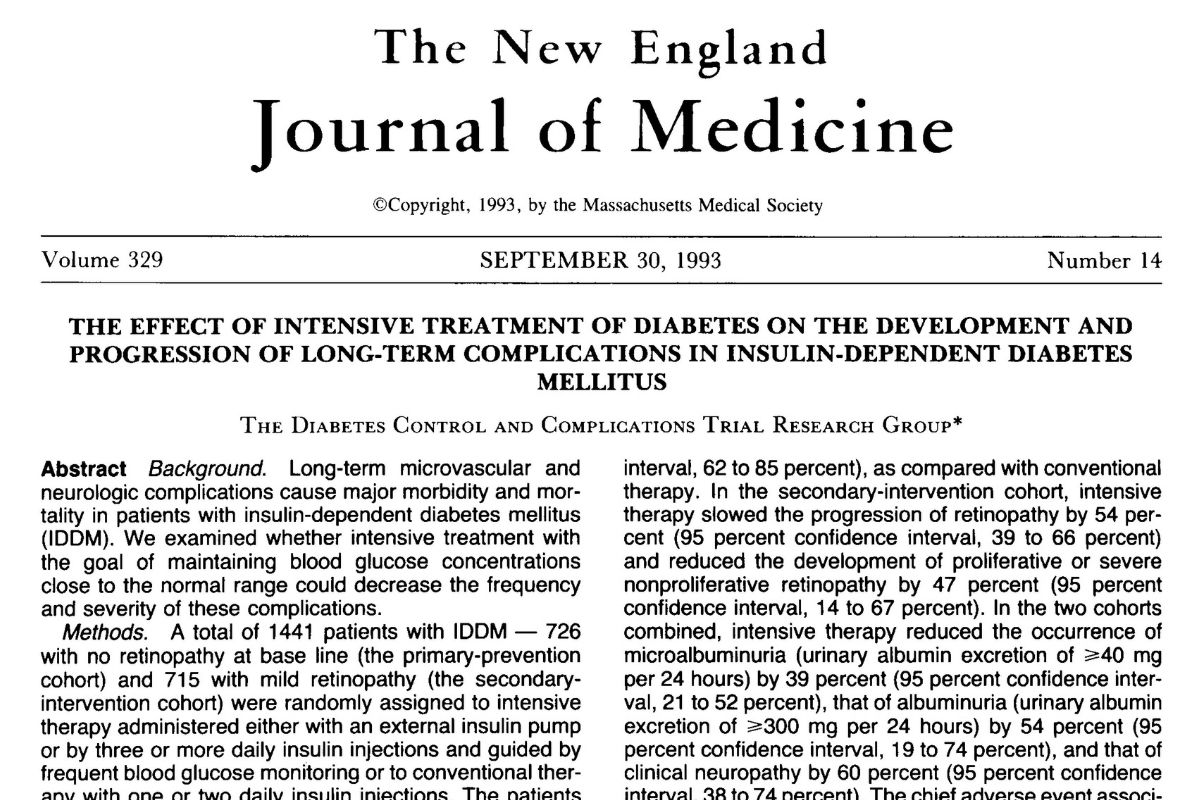Nobody Knew…Until the Diabetes Control and Complications Trial

The common belief for decades was that diligent monitoring of blood sugars and intensive insulin therapy had little consequence for people with diabetes. Then the Diabetes Control and Complications Trial (DCCT) took place. This trial, from 1983-1993, would find out if intensive insulin control warded off complications from the disease. (Hint: it does.)
A lot had happened with diabetes care in the preceding decade. Some highlights from issues of JDRF’s Diabetes Countdown:
“In 1974, the Congress of the United States passed the National Diabetes Mellitus Research and Education Act. This law required that the Director of the National Institutes of Health establish a National Commission on Diabetes charged with the task of formulating a long-range plan to combat diabetes. In 1975, the Commission reported its findings regarding the scope and impact of diabetes as a major public health problem. It specifically recommended that [we]…initiate and support a five-year clinical study to assess the effect of treatment on the development of microvascular and macrovascular complications in persons with insulin-dependent diabetes.
Between 1975 and 1980, developments in several areas substantially altered the nature of the proposed clinical trial. New tools for the assessment and management of individuals with diabetes became available for widespread use. The hemoglobin A1c assay provided a more reliable, quantitative assessment of the average blood glucose levels over the preceding three to six week period. Methods for self blood glucose monitoring permitted patients to make daily therapeutic decisions at home so as to maintain blood glucose levels within a desired range….The planning stage for the DCCT was begun in 1982 and completed in 1983.” (Countdown, Winter 1986)
“Patients will be randomly assigned to one of the treatment groups, called Standard Treatment or Experimental Treatment. Standard Treatment is meant to be equivalent to what most diabetics receive today and will include one or two daily injections of insulin….Volunteers in the Experimental Treatment group will receive intensive insulin therapy either by insulin pump or by multiple daily injections of insulin.” (Countdown, Winter 1984)
The DCCT had almost 1,500 people with type 1 diabetes (T1D) take part, and “by June 1993, the evidence in favor of tight control was so compelling that the study was stopped so that important findings could be publicized. While most of the researchers expected some effect of intensive therapy on complications, they were very surprised by the magnitude of the change.” (Countdown, Winter 1994)
Participants in the trial who were able to keep their blood-sugar levels as close to normal as possible had less chance of developing complications, by a lot; they had reduced the risk of developing eye disease by 76%, nerve disease by 60% and kidney disease by 50%.
At the time, many doctors had not put much emphasis on tight control of blood-sugar levels. The DCCT study caused them to rethink.
Following the DCCT findings, the Epidemiology of Diabetes Interventions and Complications (EDIC) study was initiated to examine the long-term effects of complications. This study demonstrated that intensive diabetes therapy reduced the risk of heart disease in people with T1D and that the differences in outcomes between the intensive and conventional therapy groups persist after long-term study. The EDIC follow-up study is ongoing.